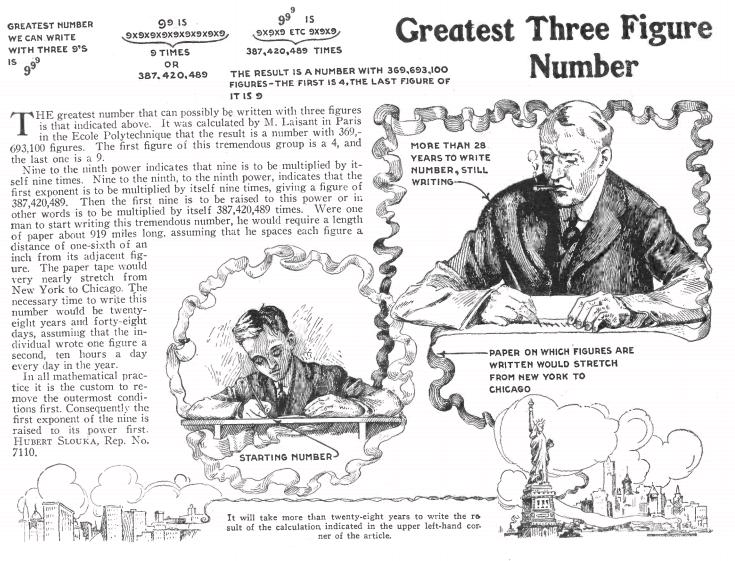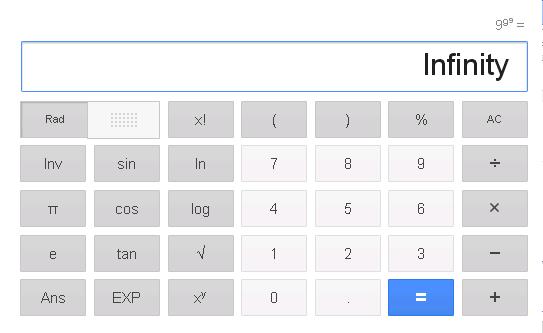In case you’ve been wondering what the largest number you can represent with three digits, the answer was provided ninety years ago this month, in the April 1926 issue of Science and Invention magazine. That number is:
According to the magazine, this is equal to a is a 369,693,100 digit number, the first digit of which is 4, the last of which is 9. In other words, rounded, it is 4 x 10^369,693,099.
According to the magazine, the number was calculated by one M. Laisant of the Ecole Polytechnique in Paris. However, it’s unlikely that M. Laisant wrote down the answer, since, it would take 28 years to write down the number, as depicted by the presumably hypothetical gentleman shown in the illustration. If written with the digits spaced a sixth of an inch apart, the number would stretch about 919 miles. (The 919 mile figure is given by the magazine, although it seems to me that the answer ought to be 972 miles, since 387,420,489/6/12/5280 = 972.)
It should be noted that the order of operations makes a huge difference in the outcome. To put it another way, the associate property of addition or multiplication does not apply to exponents.
(9^9)^9 is a very modest 78 digit number, 1.9662705 x 10^77, since it is merely 387,420,489 multiplied by itself nine times. 9^(9^9), on the other hand, is 9 multiplied by itself 387,420,489 times, which results in 4 x 10^369,693,099.
We can do a quick plausibility check of the magazine’s answer by noting that 9^(9^9) < 10^(10^10), Ten to the tenth power is one followed by ten zeroes, 10,000,000,000. Ten to the power of 10,000,000,000 is one followed by 10,000,000,000 zeroes, a ten billion and one digit number. The answer given by the magazine, a mere 369,693,100 digit number, is indeed smaller. The quick jump from 369 million to 10 billion digits isn’t surprising when you consider the following:
1^1^1 = 1
2^2^2 = 16
3^3^3 = 7,625,597,484,987
Unfortunately, Google calculator fails us, since it reports merely that the answer is “infinity.” But on the other hand, that’s probably close enough. Since there are only about 10^80 atoms in the observable universe, a number much larger than that probably has little practical use.
The M. Laisant identified in the article is apparently Charles-Ange Laisant, who wrote more about the problem in Thresholds of Science: Mathematics, published in 1914.
Click Here For Today’s Ripley’s Believe It Or Not Cartoon



